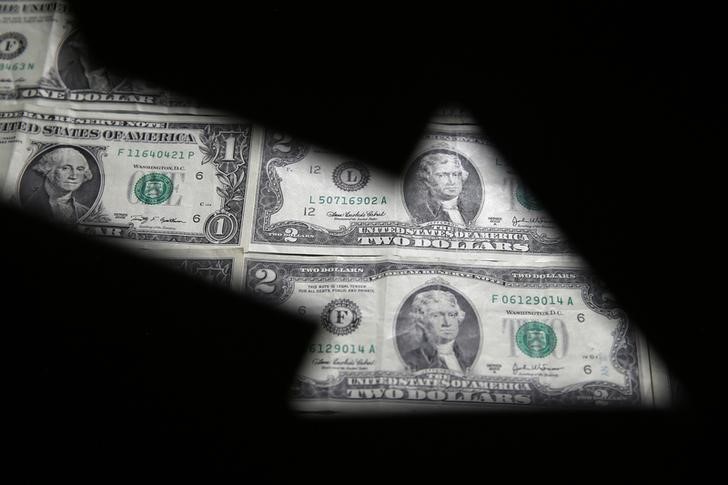Eos Energy stock falls after Fuzzy Panda issues short report
Investing.com - The U.S. dollar inched higher Friday, holding its ground after relatively hawkish comments from Fed Chair Jerome Powell, while the euro also gained after the European Central Bank meeting.
At 05:10 ET (09:10 GMT), the Dollar Index, which tracks the greenback against a basket of six other currencies, traded 0.1% higher to 99.380, after reaching a three-month high on Thursday.
Dollar gains following Powell’s speech
The dollar has benefited from the lingering impact of Powell’s press conference in the wake of the latest Federal Reserve policy-setting meeting earlier this week.
The U.S. central bank lowered interest rates by 25 basis points on Wednesday, as widely expected, but speaking in the subsequent press conference, the Fed chairman flagged that another similarly-sized rate drawdown was "far from" a foregone conclusion at the central bank’s next gathering in December.
Traders have scaled back bets the Federal Reserve will cut rates again at its next policy meeting on December 10. Fed funds futures imply a 74.7% probability of a 25-basis-point cut then compared with a 91.1% chance a week ago, according to the CME Group’s FedWatch tool.
“The government shutdown has prevented jobs data from offering that catalyst, and Powell’s caution on a December cut has to be taken more at face value now,” said analysts at ING, in a note.
Bar for more ECB easing "remains high"
In Europe, EUR/USD rose 0.1% to 1.1570, after data showed that French consumer prices rose slightly less than expected in October, rising 0.9% year-on-year in October, down from 1.1% in September.
Eurozone consumer prices for October are due for release later in the session, and are expected to show a small reduction to 2.1% on an annual basis, from 2.2% growth the prior month.
The European Central Bank kept interest rates unchanged at 2% for the third meeting in a row on Thursday and repeated that policy was in a "good place" as economic risks recede.
“The coming weeks will see Governing Council members offering their nuances to the policy-inflation-growth assessments. But don’t expect much. The ECB is clearly in a ‘good place’ at 2% and the bar for more easing remains high,” ING said.
GBP/USD slipped 0.1% to 1.3143, as political pressures grew surrounding British Finance Minister Rachel Reeves.
“Markets are wary that a change in Chancellor could herald more relaxed fiscal rules and additional borrowing, at a time when gilt issuance remains elevated. A surprise resignation, which looks unlikely, would, in our view, cause elevated volatility in gilts and the pound,” ING added.
Yen retreats despite hot CPI reading
In Asia, USD/JPY traded 0.2% higher to 154.36, with the yen handing back earlier gains after finding some strength as the consumer price index for Tokyo read stronger than expected in October, with core inflation also rising further above the BOJ’s 2% annual target.
Other data showed Japanese industrial production grew more than expected in September, while retail sales growth lagged.
The Bank of Japan left rates unchanged as widely expected on Thursday. But Governor Ueda raised the possibility of hiking interest rates soon, although this would also depend on Japanese wage growth.
USD/CNY traded 0.1% higher to 7.1143, following a slightly weaker midpoint fix from the People’s Bank.
Purchasing managers index data showed China’s manufacturing sector shrank more than expected, contracting in October for a seventh consecutive month.
China’s composite PMI was also on the verge of turning negative in October, as local businesses grappled with sluggish private spending and high U.S. export tariffs.
Still, the yuan remained close to its strongest level in a year, following months of strong fixings by the PBOC.
AUD/USD slipped 0.2% lower to 0.6542, reversing course after hot CPI data dampened bets on more rate cuts by the Reserve Bank. The Aussie dollar lost nearly 1% in October.
